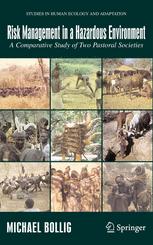

Most ebook files are in PDF format, so you can easily read them using various software such as Foxit Reader or directly on the Google Chrome browser.
Some ebook files are released by publishers in other formats such as .awz, .mobi, .epub, .fb2, etc. You may need to install specific software to read these formats on mobile/PC, such as Calibre.
Please read the tutorial at this link: https://ebookbell.com/faq
We offer FREE conversion to the popular formats you request; however, this may take some time. Therefore, right after payment, please email us, and we will try to provide the service as quickly as possible.
For some exceptional file formats or broken links (if any), please refrain from opening any disputes. Instead, email us first, and we will try to assist within a maximum of 6 hours.
EbookBell Team

4.7
96 reviewsA research focus on hazards, risk perception and risk minimizing strategies is relatively new in the social and environmental sciences. This volume by a prominent scholar of East African societies is a powerful example of this growing interest. Earlier theory and research tended to describe social and economic systems in some form of equilibrium. However recent thinking in human ecology, evolutionary biology, not to mention in economic and political theory has come to assign to "risk" a prominent role in predictive modeling of behavior. It turns out that risk minimalization is central to the understanding of individual strategies and numerous social institutions. It is not simply a peripheral and transient moment in a group’s history. Anthropologists interested in forager societies have emphasized risk management strategies as a major force shaping hunting and gathering routines and structuring institutions of food sharing and territorial behavior. This book builds on some of these developments but through the analysis of quite complex pastoral and farming peoples and in populations with substantial known histories. The method of analysis depends heavily on the controlled comparisons of different populations sharing some cultural characteristics but differing in exposure to certain risks or hazards.
The central questions guiding this approach are: 1) How are hazards generated through environmental variation and degradation, through increasing internal stratification, violent conflicts and marginalization? 2) How do these hazards result in damages to single households or to individual actors and how do these costs vary within one society? 3) How are hazards perceived by the people affected? 4) How do actors of different wealth, social status, age and gender try to minimize risks by delimiting the effect of damages during an on-going crisis and what kind of institutionalized measures do they design to insure themselves against hazards, preventing their occurrence or limiting their effects? 5) How is risk minimization affected by cultural innovation and how can the importance of the quest for enhanced security as a driving force of cultural evolution be estimated?